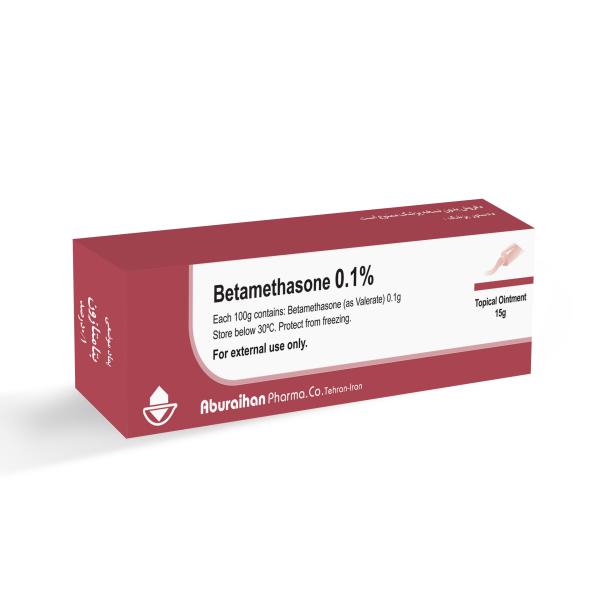Betamethasone
Betamethasone
0.1% cream and ointment
Dermatoses: Relief of inflammatory and pruritic manifestations of corticosteroid-responsive dermatoses.
Mechanism of Action:
Topical corticosteroids have anti-inflammatory, antipruritic, and vasoconstrictive properties. May depress the formation, release, and activity of endogenous chemical mediators of inflammation (kinins, histamine, liposomal enzymes, prostaglandins) through the induction of phospholipase A inhibitory proteins (lipocortins) and sequential inhibition of the release of arachidonic acid. Betamethasone has intermediate to very high range potency (dosage-form dependent).
Method of Administration:
Cream, ointment: Apply topical sparingly to affected areas. Do not use if atrophy is present at the treatment site. Do not cover with occlusive dressing unless directed otherwise by health care provider. Do not apply very high potency agents to face, groin, axillae, or diaper area. Not for oral, ophthalmic, or intravaginal use. Wash hands after use.
Notes
Contraindications:
Hypersensitivity to betamethasone, other corticosteroids, or any component of the formulation
Interactions:
Aldesleukin: Corticosteroids may diminish the antineoplastic effect of Aldesleukin. Risk X: Avoid combination
CYP3A4 Inhibitors (Strong): May increase the serum concentration of Betamethasone (Topical). Risk C: Monitor therapy
Pregnancy and Lactation:
In general, the use of topical corticosteroids is not associated with a significant risk of adverse pregnancy outcomes. However, there may be an increased risk of low birth weight infants following maternal use of potent or very potent topical products, especially in high doses, although this risk is likely to be low.
Use with caution in breast feeding.
Warning and Precaution:
- Adrenal suppression: May cause hypercortisolism or suppression of hypothalamic-pituitary-adrenal
(HPA) axis, particularly in younger children or in patients receiving high doses for prolonged periods.
HPA axis suppression may lead to adrenal crisis.
- Contact dermatitis: Allergic contact dermatitis can occur and is usually diagnosed by failure to heal
rather than clinical exacerbation; discontinue use if irritation occurs and treat appropriately.
- Immunosuppression: Prolonged use of corticosteroids may also increase the incidence of secondary
infection, mask acute infection (including fungal infections), prolong or exacerbate viral infections, or limit response to vaccines. Exposure to varicella zoster (chickenpox) should be avoided; corticosteroids should not be used to treat ocular herpes simplex.
- Ocular effects: Topical corticosteroids, including betamethasone, may increase the risk of posterior
subcapsular cataracts and glaucoma. Monitor for ocular symptoms. Avoid contact with eyes.
- Skin reactions: Discontinue if skin irritation or contact dermatitis occurs; do not use in patients with
decreased skin circulation.
- Systemic effects: Topical corticosteroids may be absorbed percutaneously. Absorption of topical
corticosteroids may cause manifestations of Cushing syndrome (rare), hyperglycemia, or glycosuria.
Absorption is increased by the use of occlusive dressings, application to denuded skin, application to
large surface areas, or prolonged use.
Adverse Reactions:
HPA axis suppression, Application site reaction (≤54%; includes application site burning, stinging of the skin, and application-site pruritus; most reactions were mild)
Storage:
Store below 30 and protect from light and moisture.


